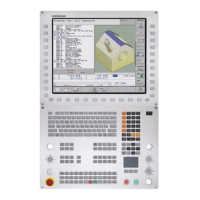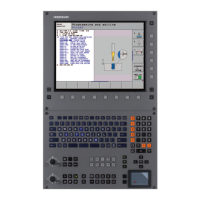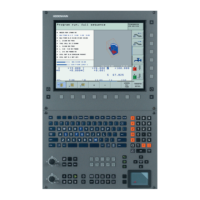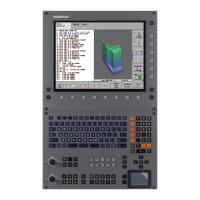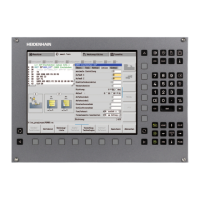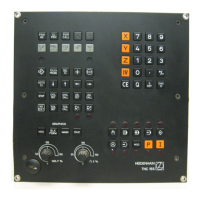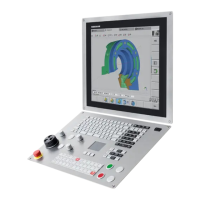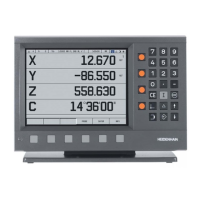486 Programming: Execution of CAM Programs, Multi-axis Machining
12.1 Execution of CAM programs
For slow machining feed rates or contours with large radii, define
the chord error to be only one-third to one-fifth of the tolerance T in
Cycle 32. Additionally, define the maximum permissible point
spacing to be between 0.25 mm and 0.5 mm
Even at higher machining feed rates, point spacings of greater than
2.5 mm are not recommended for curved contour areas
For straight contour elements, one NC point at the beginning of a
line and one NC point at the end suffice. Avoid the output of
intermediate positions
In programs with five axes moving simultaneously, avoid large
changes in the ratio of path lengths in linear and rotational blocks.
Otherwise large reductions in the feed rate could result at the tool
reference point (TCP)
The feed-rate limitation for compensating movements (e.g. via M128
F..., see "Maintaining the position of the tool tip when positioning
with tilted axes (TCPM): M128 (software option 2)", page 524)
should be used only in exceptional cases. The feed-rate limitation for
compensating movements can cause large reductions in the feed
rate at the tool reference point (TCP).
NC programs for 5-axis simultaneous machining with spherical
cutters should preferably be output for the center of the sphere. The
NC data are then generally more consistent. Additionally, n Cycle 32
you can set a higher rotational axis tolerance TA (e.g. between one
and two degrees) for an even more constant feed-rate curve at the
tool reference point (TCP)
For NC programs for 5-axis simultaneous machining with toroid
cutters or radius cutters where the NC output is for the south pole
of the sphere, choose a lower rotational axis tolerance 0.1° is a
typical value. However, the maximum permissible contour damage
is the decisive factor for the rotational axis tolerance. This contour
damage, in turn, depends on the possible inclination of the tool, the
tool radius, and the engagement depth of the tool. For 5-axis
hobbing with an end mill you can calculate the maximum
permissible contour damage T directly from the cutter engagement
length L and the permitted contour tolerance TA:
T ~ K x L x TA K = 0.0175 [1/°]
Example: L = 10 mm, TA = 0.1°: T = 0.0175 mm
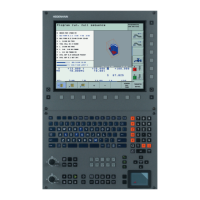
